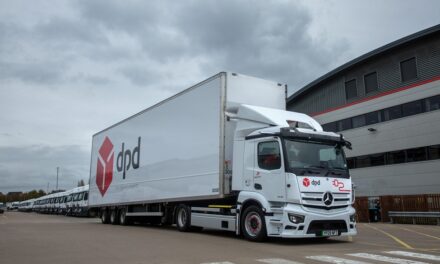
Irish parcel carriers seeing bulk of growth in B2C deliveries
Irish parcel carriers are expecting significant growth in volumes in the next few years, thanks to soaring e-commerce. But, in a new report commissioned by postal regulator ComReg, research warned of ever increasing expectations of senders and recipients.
Investing in new technology has been helping retailers and carriers keep pace with these expectations.
But, some carriers reported that strong competition in the sector is affecting their growth, particularly with consumers expecting increasing levels of service for “very low prices”.
The research estimates that packet and parcel volumes in Ireland will grow between 3-5% each year overall by volume, with much of that growth in business-to-consumer deliveries where 7-9% annual growth will be seen in the next few years.
Volumes in 2016 will be between 90m and 109m items per year, the report predicted.
Projections suggest that the value of the sector will grow 2-4% per annum, including a 6-8% annual growth in B2C and 0-2% growth in B2B. The value of the sector was between EUR 430m and EUR 520m in 2013, and in 2016 will be between EUR 470m and EUR 593m, the study claimed.
The research was carried out by Frontier Economics and commissioned by ComReg, to look at the increasing importance of parcels in the mail sector, particularly as letter volumes decline.
The study estimated that parcel market as 57-62% B2B deliveries, 35-40% B2C and 3-4% consumer to consumer or consumer to business.
However, parcel carriers expect most of their growth going forward to be business-to-consumer deliveries, with business-to-business volumes remaining relatively stable.
The size of the e-commerce market in Ireland is set to grow from EUR 5.9bn in 2014 to EUR 12.7bn by 2020.
The challenge in coping with the B2C growth for carriers will be in coping with missed deliveries, fraud and returns, as well as Ireland’s non-unique addresses.
Expectations
The biggest challenge in particular seems to be the increasing expectations of consumers regarding their parcel deliveries, with “sorry you were out” cards no longer acceptable to many consumers.
For UK retailers selling into Ireland, customs delays can also be a significant challenge to inbound shipments, the report said.
To improve delivery convenience, carriers have been working on alternative delivery or collection options – parcel lockers, parcel shops, delivery to alternative addresses.
The report said that eight parcel carriers now account for about 90% of the Irish market by volume. State-owned postal service An Post leads with a 30-40% market share, followed by Nightline, DPD and GLS, which have market shares of between 10-15%. Fastaway and DHL are estimated to have market shares of 5-10% by volume.
Some operators have different market shares by revenue, marking the difference in revenue per item, with An Post’s market share lower by revenue (about 20-30% of the market) and express operators like DHL and UPS higher (between 10-15% of the market by revenue).
Prices
Looking at prices in the sector, the study suggested that SMEs face much higher prices for sending items abroad than domestically — EUR 8.53 on average to ship items within Ireland, EUR 17.33 abroad.
The study also suggested that large retailers are enjoying considerable discounts — and/or using more standard delivery services than SMEs, rather than express services — which pushes the average price of all parcel deliveries down to EUR 5.40 per item.
“While the level of services provided has increased, prices have generally remained fairly stable over the last three years. This is seemingly due to a highly competitive market and, in particular, the increasing power of senders with growing sales,” the report commented.












